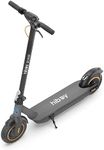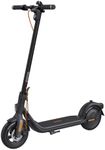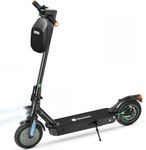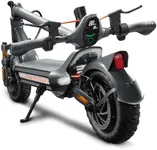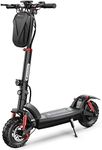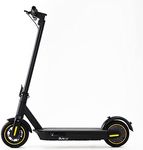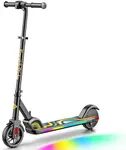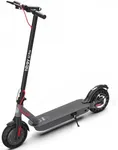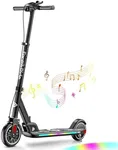Buying Guide for the Best Long Range Electric Scooter
Choosing a long-range electric scooter can be exciting, especially if you want to travel farther without worrying about frequent recharging. The right scooter for you depends on how far you plan to ride, the terrain you'll encounter, and your comfort preferences. It's important to look at the main features that affect range, performance, and usability, so you can find a scooter that matches your daily needs and riding style.Battery CapacityBattery capacity, usually measured in watt-hours (Wh) or ampere-hours (Ah), tells you how much energy the scooter can store. This is a key factor in determining how far you can travel on a single charge. Higher capacity means longer range, but also more weight and longer charging times. For short city commutes, a lower capacity may be enough, while longer suburban or rural rides will benefit from a higher capacity. Think about your typical trip distance and choose a battery that comfortably covers it with some extra margin.
Motor PowerMotor power, measured in watts (W), affects how well the scooter handles hills, acceleration, and carrying heavier loads. Lower power motors (under 350W) are fine for flat city streets and lighter riders, while mid-range motors (350W-500W) offer a balance for mixed terrain. High power motors (over 500W) are best for hilly areas or heavier riders. Consider your route and body weight to decide what level of power you need for a smooth and efficient ride.
RangeRange is the maximum distance the scooter can travel on a single charge, usually given in kilometers or miles. This number is often based on ideal conditions, so real-world range may be less. Short-range scooters (up to 20 km/12 miles) are good for quick errands, mid-range (20-40 km/12-25 miles) suits most daily commutes, and long-range (over 40 km/25 miles) is best for extended trips. Match the range to your longest expected ride, and remember to allow for some extra distance for unexpected detours or changes in riding style.
Weight and PortabilityThe weight of the scooter affects how easy it is to carry, store, or take on public transport. Lighter scooters are easier to handle but may have smaller batteries and motors, while heavier models offer more range and power but can be cumbersome. If you need to carry your scooter upstairs or onto a bus, prioritize lighter models. If you mostly ride and rarely carry it, a heavier scooter with a bigger battery may be worth it.
Tire Type and SuspensionTires and suspension impact ride comfort and safety. Solid tires are puncture-proof but can feel rough on uneven surfaces, while air-filled tires provide a smoother ride but may need more maintenance. Suspension systems help absorb bumps, making longer rides more comfortable. If you ride on smooth city streets, basic tires and no suspension may be fine. For rougher roads or longer journeys, look for air-filled tires and some form of suspension.
Charging TimeCharging time is how long it takes to fully recharge the battery. Shorter charging times are convenient if you need to use the scooter multiple times a day, while longer times may be fine if you only charge overnight. Charging times can range from a few hours to over eight hours, depending on battery size and charger type. Consider your daily routine and how often you need the scooter ready to go.
Maximum LoadMaximum load is the highest weight the scooter can safely carry, including the rider and any cargo. Exceeding this limit can reduce performance and range, and may damage the scooter. Most scooters support between 100-120 kg (220-265 lbs), but some heavy-duty models can handle more. Choose a scooter with a load limit that comfortably covers your weight and anything you might carry.
